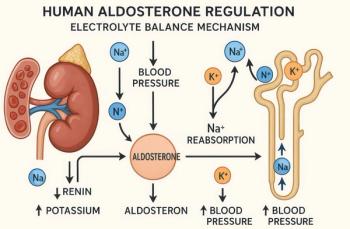
Horseback Riding a Major Cause of Recreational Brain Trauma
ATLANTA -- Horseback riding causes the highest proportion of traumatic brain injuries among sports-related recreational, activities, according to the CDC. For brain injuries, ice skating is next.
ATLANTA, July 27 -- Horseback riding causes the highest proportion of traumatic brain injuries among sports-related recreational, activities, according to the CDC. Ice skating is next.
Young people account for almost two of every three sports-related traumatic brain injuries treated in every year, said the CDC in the July 27 issue of Morbidity and Mortality Weekly Report.
About 135,000 of the approximately 208,000 sports-related brain injuries treated annually occurred in people ages five to 18, the agency said, or about 65%. About 8% of those traumatic brain injuries required in-patient care, the CDC said.
Such injuries -- defined as concussion or internal organ injury -- "are very serious and should never be ignored," CDC director Julie Gerberding, M.D., said in a statement.
For all ages, basketball and bicycling accounted for the greatest number of emergency visits for all causes, with 603,239 and 524,692, respectively.
But the proportion of brain injuries was highest for horseback riding (11.7%), ice skating (10.4%), all-terrain vehicles (8.4%), tobogganing or sledding (8.3%), and bicycling (7.7%).
The CDC estimated that 1.1 million people with traumatic brain injuries - from all causes -- are treated and released from emergency departments each year, and 235,000 more are kept in the hospital.
But to discern the numbers related to sports and recreation, the agency turned to the National Electronic Injury Surveillance System-All Injury Program (NEISS-AIP) for the period 2001 though 2005.
The CDC analysis excluded cases if the principal diagnosis was an illness, pain only, psychological harm only, contact dermatitis associated with consumer products or plants, or unknown. Also excluded were emergency visits that resulted from the adverse effects of therapy, those related to violence, and cases in which the patient was dead on arrival or died during treatment.
The analysis found:
- 207,830 patients with sports- or recreation-related brain injuries were treated in emergency departments each year - about 5.1% of all emergency visits related to sports or recreation.
- Males accounted for about 70.5% of such visits.
- For both males and females, the highest rates occurred among those ages 10 to 14 years, followed by ages 15 to 19.
- The activities associated with the greatest number of such emergencies were bicycling, football, playground activities, basketball, and riding all-terrain vehicles.
Although most traumatic brain injuries are initially seen as mild, "even mild traumatic brain injury can affect a person's ability to return to school or work and can result in long-term cognitive or other problems," the agency said.
The CDC report also said that its numbers might underestimate the extent of the problem. On the basis of previous research, the agency said, it's likely that only between 5.5% and 13.0% of sport-treated brain injuries are seen in the emergency ward.
The analysis has several limitations, the agency said, including:
- Injury rates for specific activities can't be calculated because there is no national data about the number of people taking part.
- The database only includes injuries that lead to the emergency room, but many people with traumatic brain injuries don't seek emergency room care.
- Year-by-year trends can't be calculated because of small numbers.
"Playing a sport is a wonderful way for kids to have fun and be in shape," said Ileana Arias, Ph.D., director of the CDC's injury center. "But there are risks involved in sports and recreational activities - especially when heads get bumped, players collide or get hit by balls, and people fall down."
Newsletter
Enhance your clinical practice with the Patient Care newsletter, offering the latest evidence-based guidelines, diagnostic insights, and treatment strategies for primary care physicians.

















































































































































































































































































